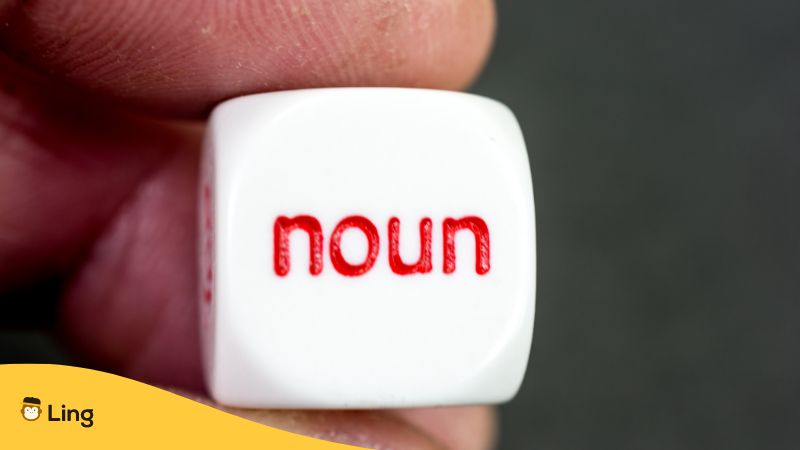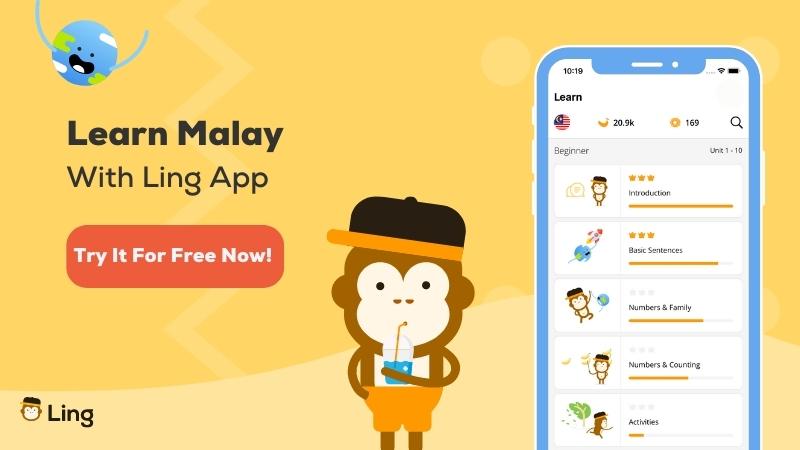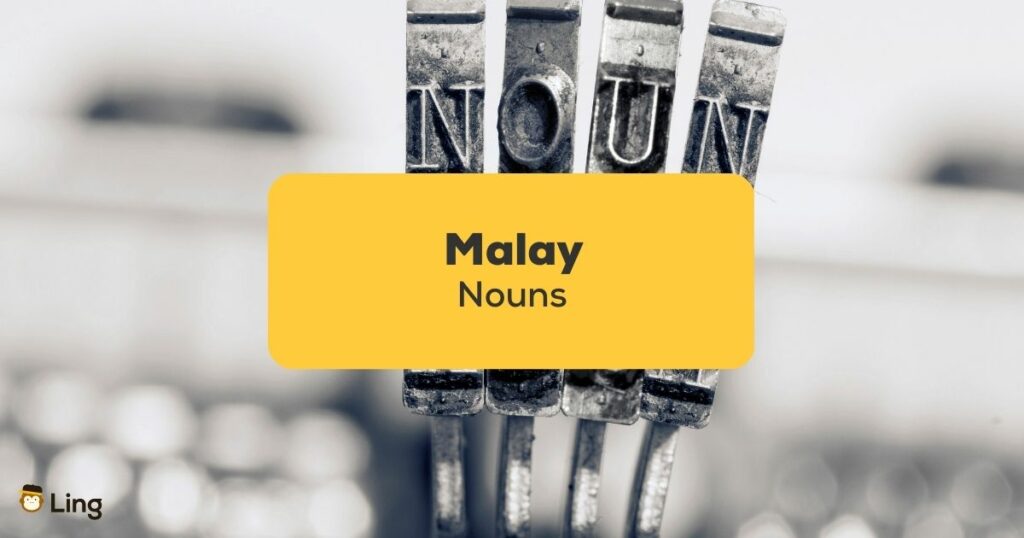When understanding nouns, you need to know if it’s the singular or plural form, how the sense is in the sentence and what adjectives describe the nouns. It is the same with Malay nouns, too. Although this is not a language lesson, we would like the chance to give you a good grasp of the Malay language with words, examples, and sentences that form a solid foundation. So here we go!
We know parts of speech have adverbs, prepositions, pronouns, adjectives, and structure in a sentence, with some details that are unique in each language. For Malay, nouns are called Kata Nama and can be defined as words that refer to people, things, animals, places, ideas, events, and qualities. It can further be divided into three types: Special Nouns, General Nouns, and Pronouns. Let’s look at each of these by breaking them down further.

Special Nouns (Kata Nama Khas)
An interesting fact about the Malay language is that it does not use grammatical genders. But there are some words used for a natural or neutral gender, and the same word is used for masculine and feminine genders, seen in many languages like English. In Malay nouns, most words referring to people have one form that does not differentiate between sexes.
Going back to Special Nouns, they are referred to names of people, places, languages, races, institutions, and so on. The first letter in special nouns is always in the capital. In the English language, we call these proper nouns. Special Nouns can be further broken down into living and non-living. Before our heads begin to spin, let’s cite some examples and clarify what these mean.
Living
Living special nouns can be human and non-human forms. Human forms would be:
- A name of a girl – Aminah
- A term of a boy – Khalid
- A teacher’s name – Professor Ahmad
- A royal family – Tengku Abdullah
Non-human forms are like:
- Folklore – Sang Kancil
- A specie of tree – Hevea Brasiliensis
- A pet’s name – Tumpuk
Non-living
- A race – Melayu
- A country – Indonesia
- A car model – Proton Saga
- The name of the place – KLCC
General Nouns (Kata Nama Am)
Unless a General Noun is placed at the beginning of a sentence, it is always in small letters, not capital letters. The first letter is not capitalized, and General nouns are things, objects, concepts, and so on.
Okay! For this one, I can’t help it. It’s a lot, and it can get confusing. Brace yourself! There are two main types.
- Concrete General Nouns – It has FOUR categories.
- Non-Concrete General Nouns – It has TWO categories.
Concrete General Nouns
Here are some Malay concrete general nouns
Human (Manusia)
- Mother – Ibu
- Father – Ayah
- Police – Polis
- Teacher – Cikgu
Non-Human (Bukan Manusia)
- Tree – Pokok
- Cow – Lembu
- Bird – Burung
- Tiger – Harimau
Institution (Institusi)
- School – Sekolah
- Kindergarten – Tadika
- Hospital – Hospital
- Post office – Pejabat pos
Non – Institution (Buakan Institusi)
- House – Rumah
- Shop – Kedai
- Beach – Pantai
- Bicycle – Basikal
Non-Concrete General Nouns
Here are some Malay non-concrete general nouns
Countable Abstract (Abstrak Boleh Dibilang)
- Smile – Senyuman
- Opinion – Pendapat
- Suggestion – Cadangan
- Comment – Komen
Uncountable Abstract (Abstrak Tidak Boleh Dibilang)
- Climate – Iklim
- Wish – Hasrat
- Beauty – Keindahan
- Truth – Kebenaran

Pronouns (Kata Ganti Nama)
For our final part of Malay nouns, we have Pronouns which have three parts. In English grammar, pronouns are a separate part of speech as we know them to be words linked to a noun, but in Malay, they are a type and part of nouns. Parts of pronouns are:
Indefinite Pronouns (Kata Ganti Nama Tak Tentu)
- Whatever – Apa-apa
- Whichever – Mana-mana
- Whenever – Bila-bila
- Whoever – Siapa–siapa
Demonstrative Pronouns (Kata Ganti Nama Tunjuk)
- This – Ini
- That – Itu
- Like this – Begini
- Like that – Begitu
Interrogative Pronouns (Kata Ganti Tanya)
- What? – Apa?
- Who? – Siapa?
- When? – Bila?
- How? – Bagaimana?
- Why? – Kenapa?
Wrapping Up
Learning about nouns is an important part of learning any language, and this is especially true for Malay, as nouns play a central role in the grammar and structure of the language.
Firstly, nouns are the building blocks of sentences. In Malay (and in most languages), nouns are used to name people, places, things, and ideas, and they are the foundation of the sentences we use to communicate. Without nouns, it would be difficult to express ourselves clearly and accurately in the language.
Secondly, nouns are essential for clear communication. By learning about nouns and how to use them correctly in your writing and speaking, you can communicate more effectively in Malay. This is especially important if you are using the language for business or other professional purposes or if you are interacting with native speakers on a regular basis. In addition, learning about nouns can help you understand the meanings of words and phrases more easily, which can make it easier for you to read and comprehend written texts in Malay.
Overall, learning about Malay nouns is an important part of learning the language, and it can help you communicate more effectively and understand the culture and traditions of Malaysia and the wider Malay-speaking world. Want to learn more about how it works? Try Ling today!

Learn Malay Nouns With The Ling App
Learning Malay grammar through gamified applications can be an effective and engaging way to improve your language skills. Here are a few reasons why we think this way.
Firstly, gamified learning through applications like Ling is interactive and fun. Apps like this often include interactive exercises and games that make learning grammar more enjoyable and engaging. This can help make the learning process more enjoyable and can help you stay motivated to continue studying. Gamified learning can also be more engaging than traditional methods, such as textbooks or lectures, which can be more passive and less interactive.
Secondly, gamified learning can provide immediate feedback. Many gamified language learning apps include features that provide immediate feedback on your performance, which can help you identify and correct mistakes more quickly. For instance, Ling has features like a chatbot or quizzes that have immediate feedback that can help you progress faster and become more proficient in the language. Immediate feedback can also help you feel more motivated and engaged, as you can see your progress and improvement in real-time.
Overall, gamified learning can be a fun and effective way to learn Malay grammar, and it may be particularly well-suited to learners who enjoy interactive, game-based learning. And if you’re looking for the best one to try out, then be sure to check out Ling. Download it on iOS and Google Play, and have a free go!


































































